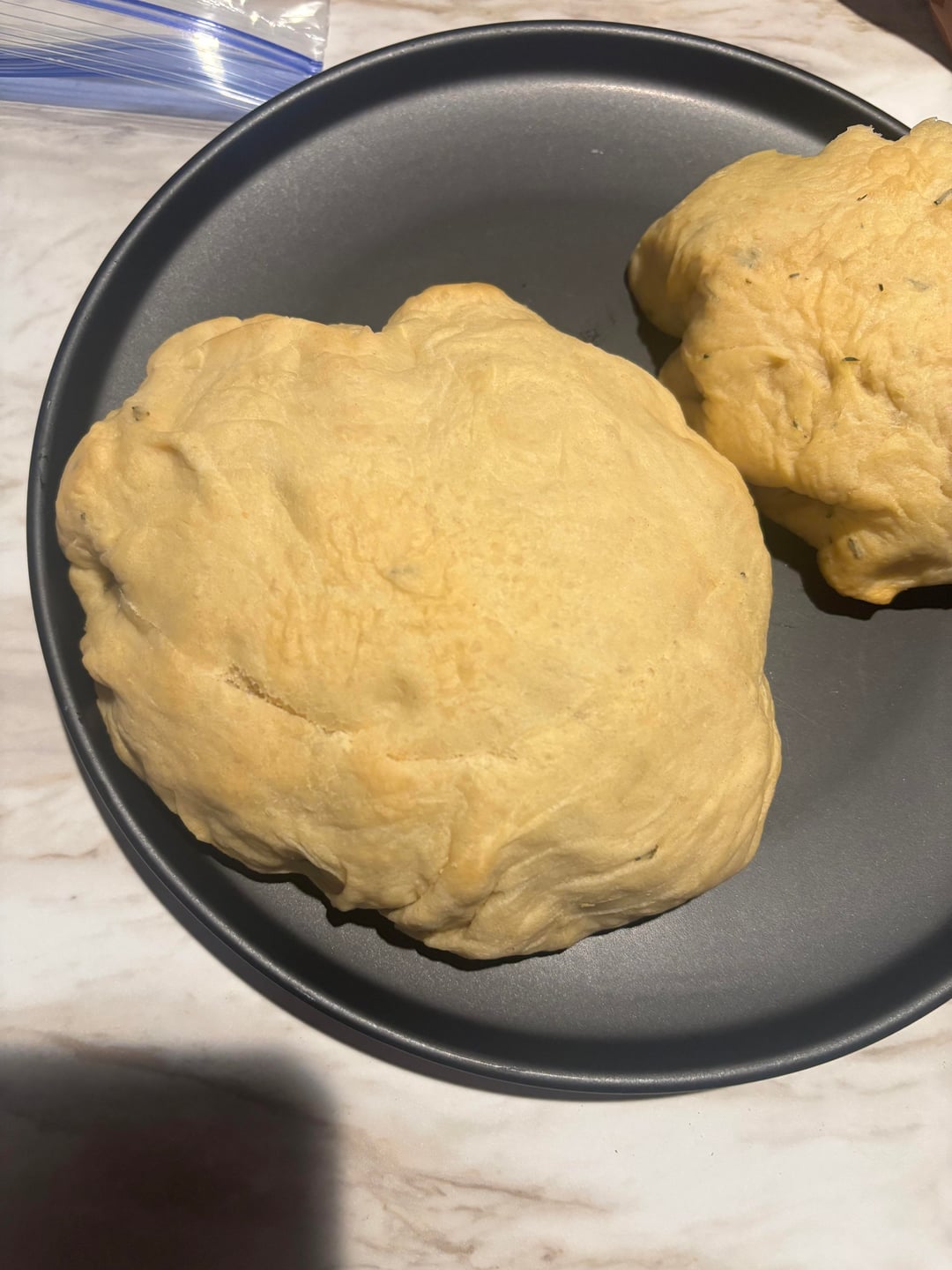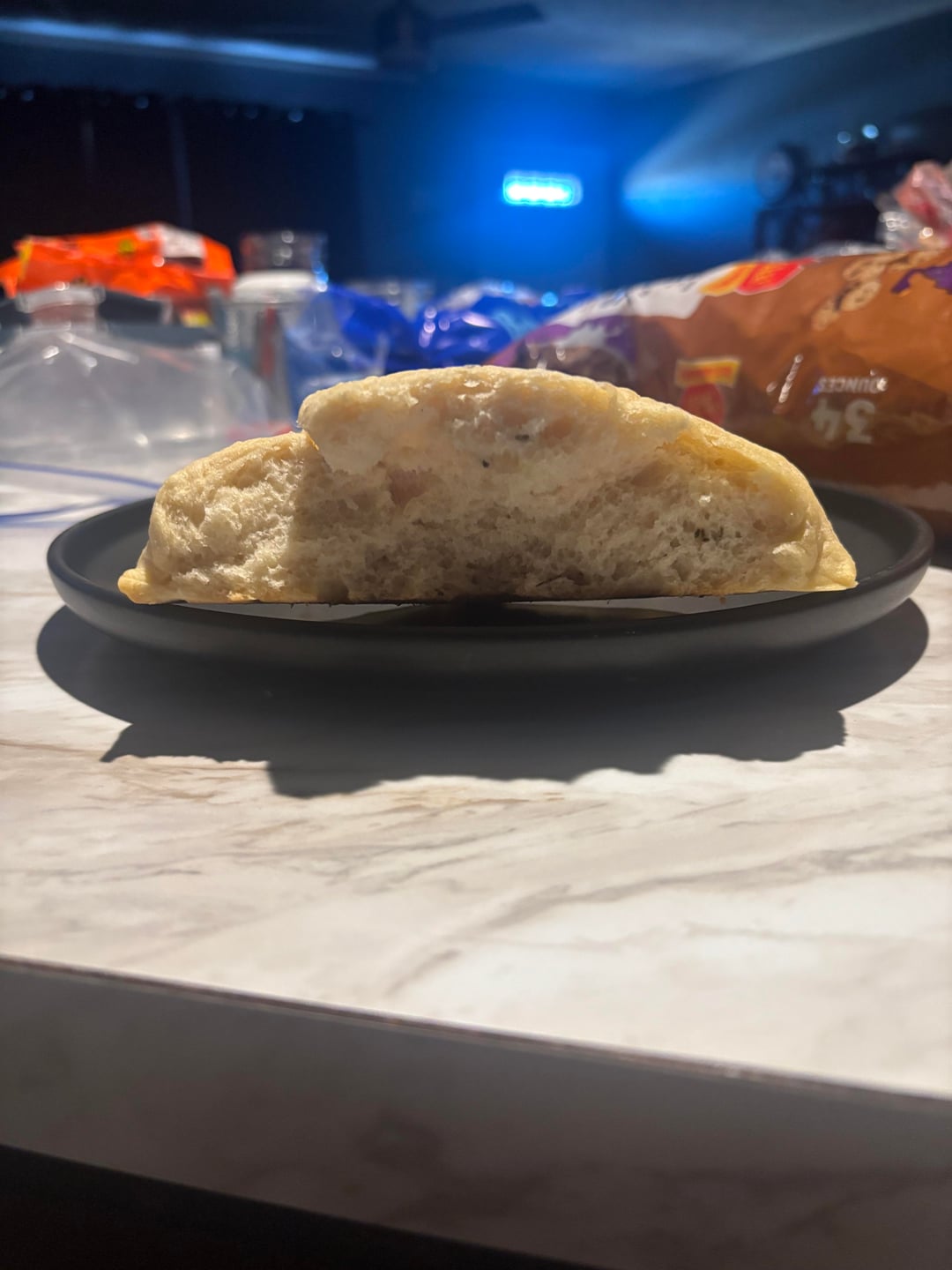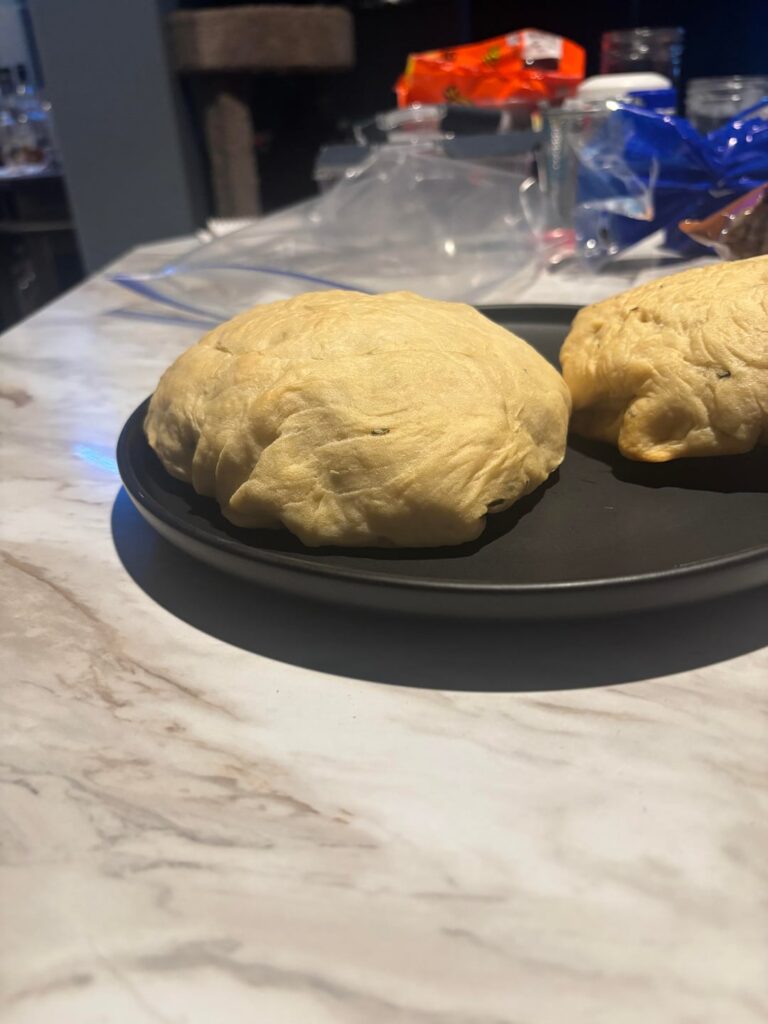


Used this recipe: https://www.food.com/recipe/romanos-macaroni-grill-rosemary-bread-64446
It still tastes good and I’m going to eat it, but the crust just didn’t develop any color it seems. It’s not excessively chewy but it is a little bland. I know nothing about bread and baking so I’m not sure if this is user error or if the recipe is just terrible.
by P0W3RB0TT0M


19 Comments
the shape looks like you either didnt knead enough or that you forgot the second rise. also could do with a bit longer in the oven
Oh, this is the bread after being baked?
Looks like it hasn’t risen at all? Did you give it time to prove?
But, you should bake them…
Ooof so first thing I’m going to tell you you got a bad recipe. Bread hates recipes. If you want bread that looks and great you got to become a bread friend. You got to understand how bread works.
Just a general warning. Anytime you see a bread recipe measured in cups, you’re probably getting information from somebody very inexperienced with bread.
The types of recipes that you want to use a thing called Baker’s ratios.
It’s just the ratio of the ingredients to the amount of flour you’re using. The standard for a loaf of bread is 500 g of flour.
So what do you actually have here? You got yourself what’s called an enriched dough. That just means you’ve added butter and sugar. And you have an additive the Rosemary.
This will be really easy to make taste great. It’s really hard to screw up butter, sugar and rosemary.
Now for the sad looking part what went wrong. It looks like you have the trifecta of problems. You didn’t knead it enough that’s why it has a cakey appearance. Because you didn’t knead it enough your dough didn’t inflate. Have you ever chewed gum too long and it turns stiff and smooth. Almost like you’re chewing on a piece of rubber. This is the exact thing you’re looking to achieve when you knead. The principal here is that the yeast produce gas and you need a way to trap that gas. This comes from organizing the gluten Network in your moistened flour. When you’re kneading you want it to turn very smooth and be very clean and easy to handle.
This will get you to the next thing you’re going to screw up which is the proofing. Proofing dough correctly comes from making a bunch of mistakes like this. If you proof too short. The dough will be dense and it won’t have enough gas. If you go too long, it’s like blowing a balloon up too much. The gluten Network will fail and it will collapse into a puddle. If you get it right in the middle, you’ll get a nice airy interior and it will stand up straight and strong.
Once you’re through that hurdle, then you’re into shaping. You have to shape correctly to get good crust so they don’t look sad like this. You’re going to have to look up a video on how to shape whatever shape you’re going to make. A lot of Baker’s phone in shaping. Trust me, it’s extremely important to do correctly. Shaping is what makes your loaf hold together and makes it look nice but its structure goes all through the dough. Go to YouTube, find a good shaping method for what you want and practice it
Nobody gets bread right on their first try. It takes years of practice to make that stuff that you see in the bakery.
As a shorter version of the longer comment: watch some youtube videos or buy a bread baking cookbook. There is much to learn.
Bread can be challenging and it’s important you leverage the thousands of years worth of expertise passed down through the ages.
“Oh, a little bit lumpy dough, but I bet it’ll puff up in the oven and…. oh”
I don’t know what to tell you, it seems like some sort of paranormal phenomenon for it to not brown up at all? It wasn’t covered?
Flour can vary in how much water it needs, and it’s especially hard to get exact measurements when using measuring cups instead of a scale because it’s easy to compress the flour when scooping it out of the bag/container. That leads to the dough being too dry which it looks like is what happened in your case. A good rule of thumb is that you should be able to stretch the dough, especially after the gluten is developed. If it’s tearing without stretching much it’s too dry and will have a hard time rising
I remember I was getting breads like this. Hard, dense, pasty. Turns out everything was just cold. My kitchen was cold, the water was cold so the dough ended up too cold, my oven also ran colder than the temperature it displayed so the dough steamed before it could bake. I solved it by making my dough with warm water (I aim for an internal temperature of 75F/24C), proof it in the oven (heat off, lights on), and I run the oven a little hotter than the recipe calls (I got an oven thermometer).
Maybe it smells your doubts, fears, and failures.

Have you tried baking it?
Sounds like you need to spend more time loving her to keep her happy
Under worked most likely. There isn’t much liquid in that recipe, so the gluten development relies on lots of kneading, and lots of resting to hydrate the flour. And with bread, the feel of it is much more important than the time you spent kneading.
When you try again, I’d recommend kneading until it’s truly smooth and then rest it overnight in a tightly sealed container in the fridge. This will let the yeast and proteins and starches and water mingle and do their thing. Then bring it out the next day, and let it rise(it will take a couple hours because it’ll need to warm to room temp), form it, let it proof, and bake it.
I would guess way too dry
I don’t trust baking recipes that aren’t measured in grams. Looks like way too much flour – and measuring flour in cups is a great way to do just that. Get a $10 scale and find a recipe that utilizes grams.
Other people got similar results in the photos that accompanied that recipe.
Always use weight of flour rather than volume. Flour packs and your bread can be under hydrated. Lack of color could mean either too cold of an oven or over fermented (no sugars in the dough to caramelize).
Look at King Arthur’s website or Sally’s Baking Addiction.
I’d say first of all don’t use a recipe from Romanos macaroni grill… also look up dough shaping videos on YouTube- you need to create tension in your dough when you shape it to get a good structure. Moving the shaped dough around too much after proofing will lead to it collapsing. Lastly what temp did you bake this at? If it was the correct temp, buy yourself an oven thermometer- they’re very cheap. My oven is like 100 degrees off, and a lot of at home ovens are wildly inaccurate! That being said, if it tastes good- at least it’s something you can enjoy!!
Looks to me you might not have given your yeast enough time to proof or your liquid was too hot and you killed it. You want warm water not hot and a couple tablespoons of sugar or honey to feed it. Let your yeast sit for about 10 minutes until it looks frothy. Don’t give up, we’ve all been there.
I recommend checking out Ken Forkish’s book Flour Water Salt Yeast from your library, it starts off with basic same day bread and works up to sourdough and really explains a lot of concepts. Plus he has a lot of videos on his YouTube channel demonstrating his techniques
Idk the answer but awww poor little sad blob, was she good though with some butter that’s the question? I’ve made some questionable looking things that have been delicious